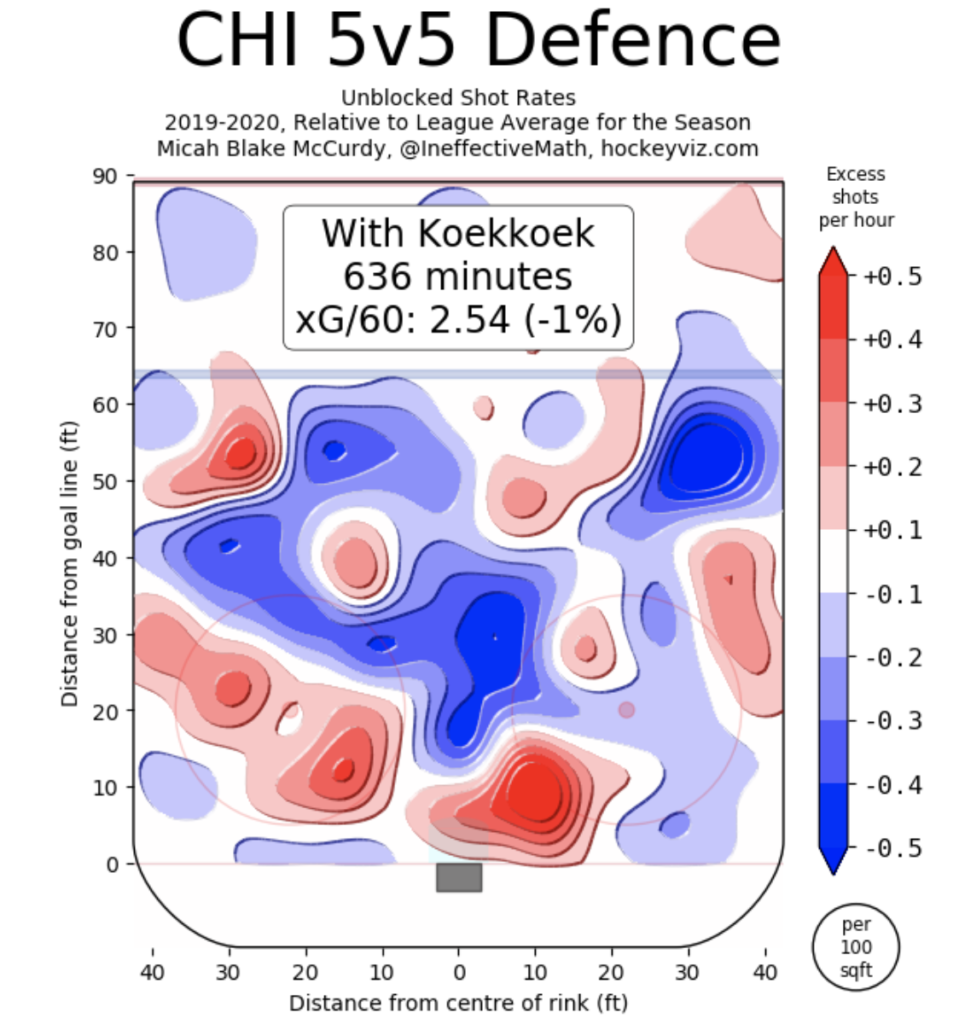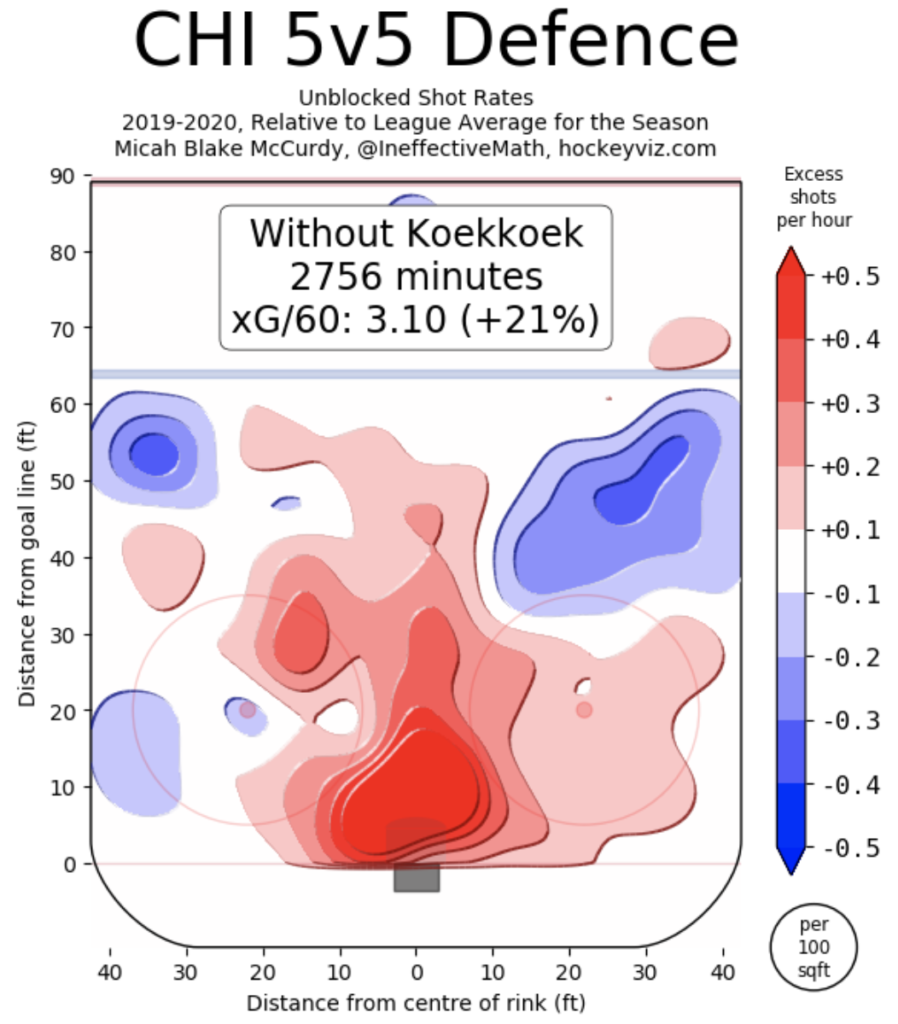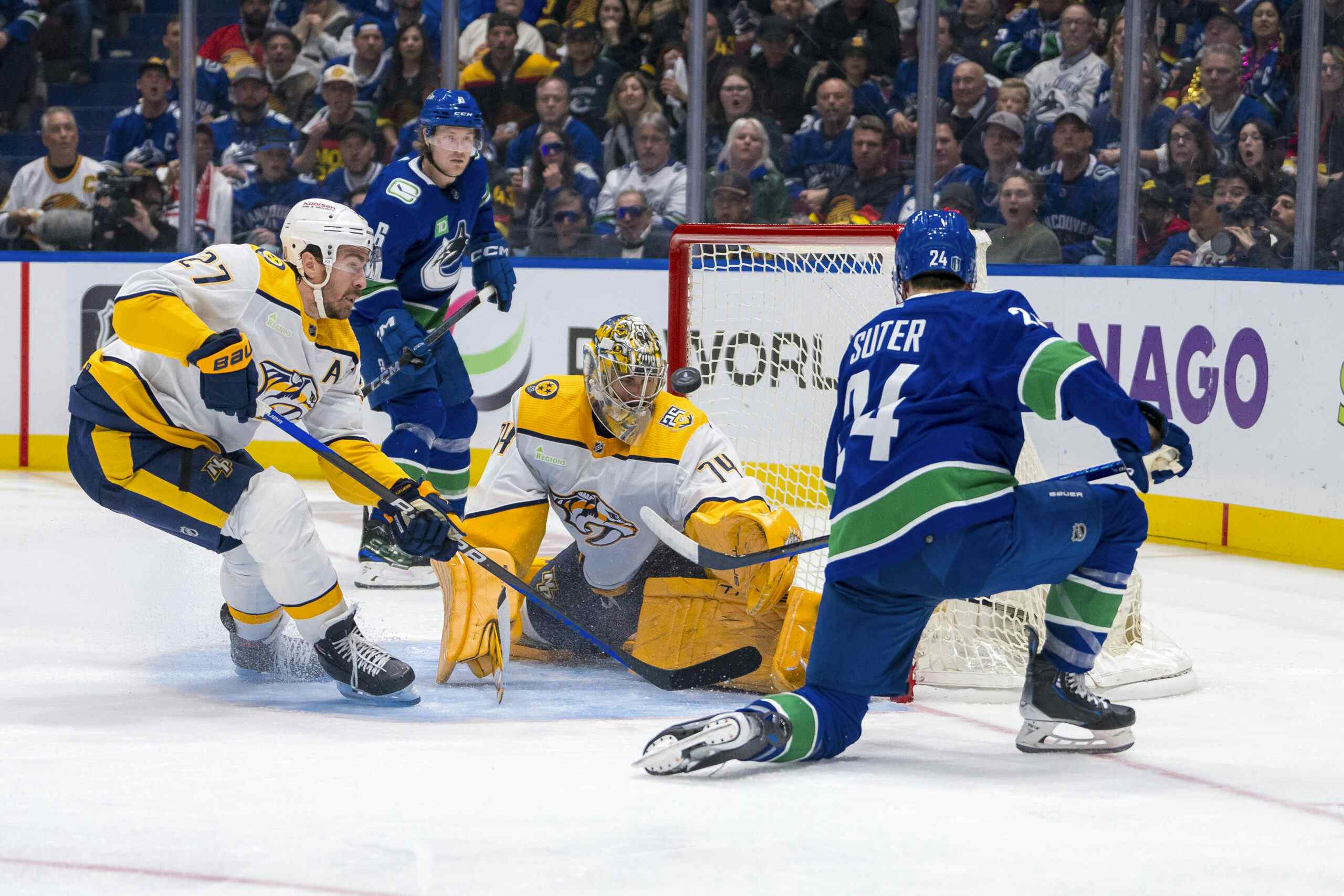The Canucks have options to become cap compliant, but Micheal Ferland is the key variable

By Bill Huan
3 years agoAs it currently stands, the Vancouver Canucks are about $1.5 million over the salary cap with a 23 man roster. Now, unless general manager Jim Benning has a secret magic wand that he could use to get rid of meme-lord Loui Eriksson, Vancouver will need to make some moves in order to become cap compliant.
Thankfully, there are some changes the team could make to help with that process, such as sending Sven Baertschi down to the minors, which would open up over $1 million in cap space. Another scenario would be Micheal Ferland starting the season on LTIR, as this would free up $3.5 million for the Canucks.
That being said, the team can’t expect Ferland to automatically go on LTIR, but this could be a good thing if he truly has recovered from his concussion issues and is ready to continue his career. At the end of the day, Ferland’s long-term health remains the most important thing, and the team will support him no matter what his final decision is. As it currently stands, he’s not sure if he’ll suit up for the start of the season.
With Ferland’s contract in a state of flux, it’s only appropriate to analyze the Canucks’ cap situation from two angles: one with Ferland on the roster and another with him placed on LTIR. His decision will have major ramifications for the team, as it could be the difference between signing another high-end free agent or staying put with the current roster.
With that out of the way, let’s dive into the ways in which the Canucks can become cap compliant.
Scenario 1: Ferland Stays On the Roster
No matter if Ferland stays on the roster of not, there’s little doubt that Baertschi will be sent down to the minors. Even after this move, the Canucks will still be a little over the cap, so another change will need to be made. Looking at the current team, one of the most glaring weakness is the blueline’s bottom pairing, as it seems like it will be a combination of Jordie Benn with a rookie like Olli Juolevi, Jack Rathbone, or Brogan Rafferty.
Benn’s struggles last season have been well documented and moving his contract will allow Vancouver to sign two more players at close to the league minimum to fill out the 23 man roster. In a normal year, he might be able to fetch a late-round pick in return, but we all know that 2020 *shudders* has been anything but normal. In the current volatile NHL landscape, the Canucks will most likely need to attach a pick just to get rid of Benn’s deal.
Young and rebuilding teams with lots of cap space like the Red Wings could be a trade partner, and a deal similar to Benn and the Canucks’ 2021 6th round pick for Detroit’s 2021 6th rounder should get it done. With Benn gone, Vancouver will now have just over $1.6 million in cap space to sign two remaining players. With the logjam of players up front, the team will probably focus on bringing in two depth defenders to play on the third pair, perhaps alongside a rookie.
One player whom the Canucks have been linked to is Slater Koekkoek, who played for the Blackhawks last season and is a left-handed shot who’s capable of playing on the right side. He put up good defensive numbers for Chicago, albeit in very limited minutes and was matched up mostly against weak competition.


Although both Koekkoek and Nate Schmidt can play on their off side, Travis Green has shown that he’s more comfortable with deploying defensemen according to their natural shooting hand. With this in mind, the Canucks will most likely prioritize signing a right-handed depth defenseman to fill in the final roster spot. A potential candidate for this position could be Jan Rutta, who suited for a few games for the Lightning during their playoff run.
Koekkoek and Rutta can both be signed for close to the league minimum, which means that the Canucks will be just under the cap with a full roster.
Scenario 2: Ferland Goes On LTIR
If Ferland elects to go on LTIR, Vancouver could decide to sit tight and not make any trades; the team will be cap compliant if they call up a few players from the minors or make another depth signing.
However, with Tyler Toffoli leaving a void in the team’s top six, it would be surprising if the Canucks didn’t try and utilize that cap space to sign another winger to play alongside Bo Horvat or Elias Pettersson. If Vancouver made the same changes that were outlined in the first scenario, they will now have close to $3 million in extra cap space. Mike Hoffman will be out of the team’s price range, but a player like Mikael Granlund could be feasible if Vancouver was able to move out another contract.
Outside of Benn, Brandon Sutter’s contract is probably the easiest to trade, especially if the Canucks retained 50% of his cap hit. This means that the team who trades for him will only add $2,187,500 to their cap, and Vancouver will have almost $5 million left to sign Granlund. A potential Sutter trade will look similar to the Benn deal, with the Canucks attaching a late-round pick and receiving a similar return by shipping him to a team with cap space like New Jersey.
The Canucks can then sign Granlund for about $4 million on a one year contract; much like Tyson Barrie, Granlund could be interested in a short-term deal to recoup some of his value and potentially land a larger contract next summer. $4 million should be close to what he would command considering Evgenii Dadonov was recently inked to a 3 year, $15 million contract and outproduced Granlund over the past three seasons.
Personally, I’d be ecstatic if the Canucks could sign Granlund to a long-term contract at a similar price point. There will be inherent risks involved considering he scored less than half a point per game in Nashville, but the Predators have a history of snuffing the offence out of their forwards, so I’m inclined to believe that it has more to do with Nashville’s system than Granlund himself.
It might be difficult to remember, but Granlund actually put up close to 70 points in each of his last two seasons in Minnesota. Playing next to Pettersson, he has a chance to not only get back to that level of production, but even surpass it: just look at what J.T. Miller accomplished this past season.
Moreover, Granlund is capable of playing centre as well, although that certainly isn’t his strong suit. Still, it’s nice to be able to have some flexibility in case injuries hit the team. He’s also very reliable defensively, as the Predators conceded a lower expected goals against with him on the ice last season.


Alas, I doubt Granlund would be willing to sign a long-term deal at that price point close to $4 million considering he could make a lot more next summer if he does indeed have a big bounce-back season. However, if he was willing to listen to a potential long-term deal, the Canucks should be all over it; a potential 70 point winger signed for around $4 million is an absolute bargain, especially considering his versatility and defensive prowess.
At this point, the odds still point to him inking a one-year deal, which will make the Canucks roster a lot more potent on both ends of the rink.
Conclusion:
No matter if Ferland decides to go on LTIR or not, the Canucks will still need to make a few more moves in order to be cap compliant. Even after demoting Baertschi to the minors, the team will still be over the limit, and the most likely victim of the cap crunch is Jordie Benn, whose contract is the easiest to move and will allow the team to sign two depth defenseman.
In the event that Ferland does go on LTIR, Vancouver will be able to comfortably get under the salary cap without making any more trades, but it would be prudent for the team to explore scenarios in which they could add a top 6 winger to replace Tyler Toffoli. By retaining half of Brandon Sutter’s contract, the Canucks should be able to trade him without giving up significant assets and sign Mikael Granlund on a short-term deal, which could prove to be a bargain given his past offensive production.
Ultimately, Jim Benning still has work left to do this offseason, but the most crucial decision will lie in Ferland’s choice to continue his career or hang up his skates for the time being.
All graphics via HockeyViz.
Recent articles from Bill Huan
- From Pettersson’s wing to the low minute man: How should the Canucks utilize Andrei Kuzmenko moving forward?
- We watched every one of Bo Horvat’s goals since 2021 to break down his evolution into an elite goal-scorer with the Canucks
- Four Canucks storylines that everyone should be thankful for this Christmas





